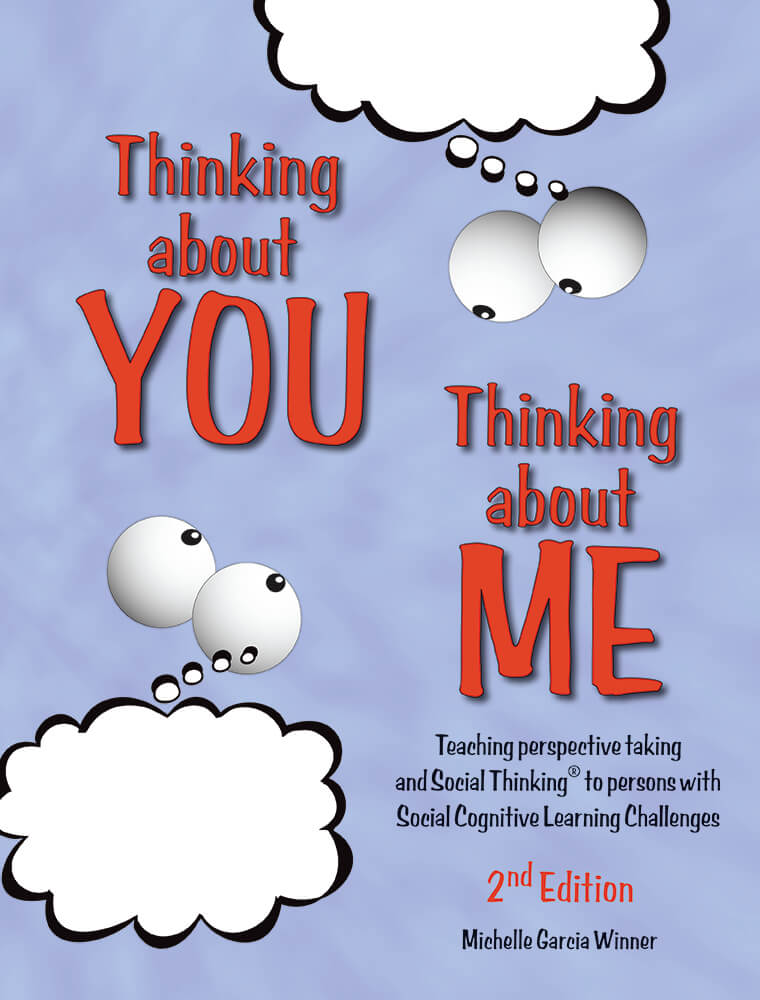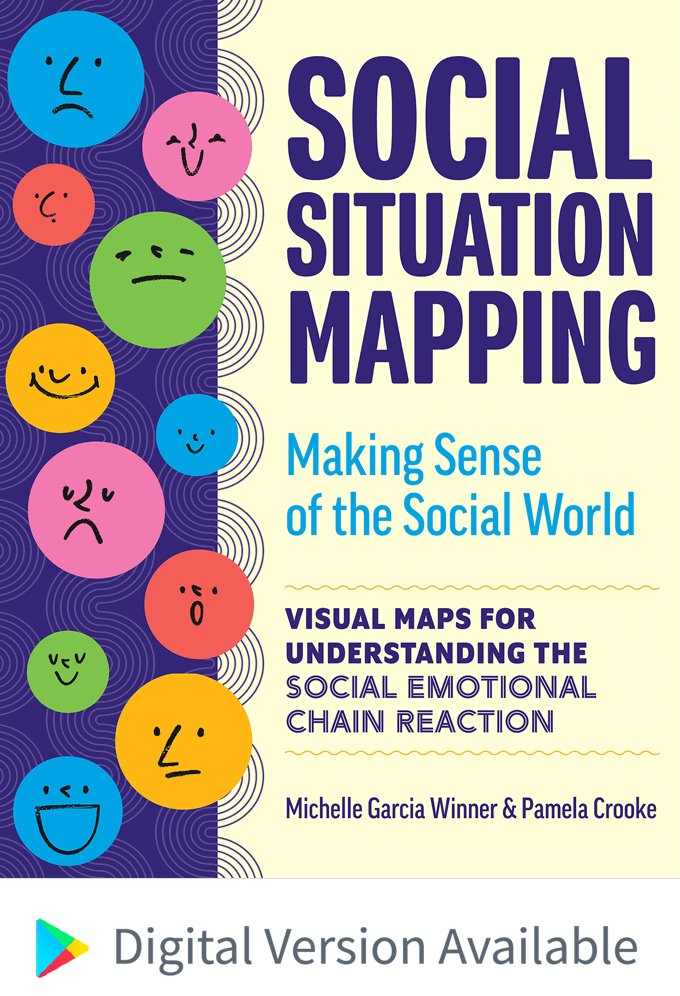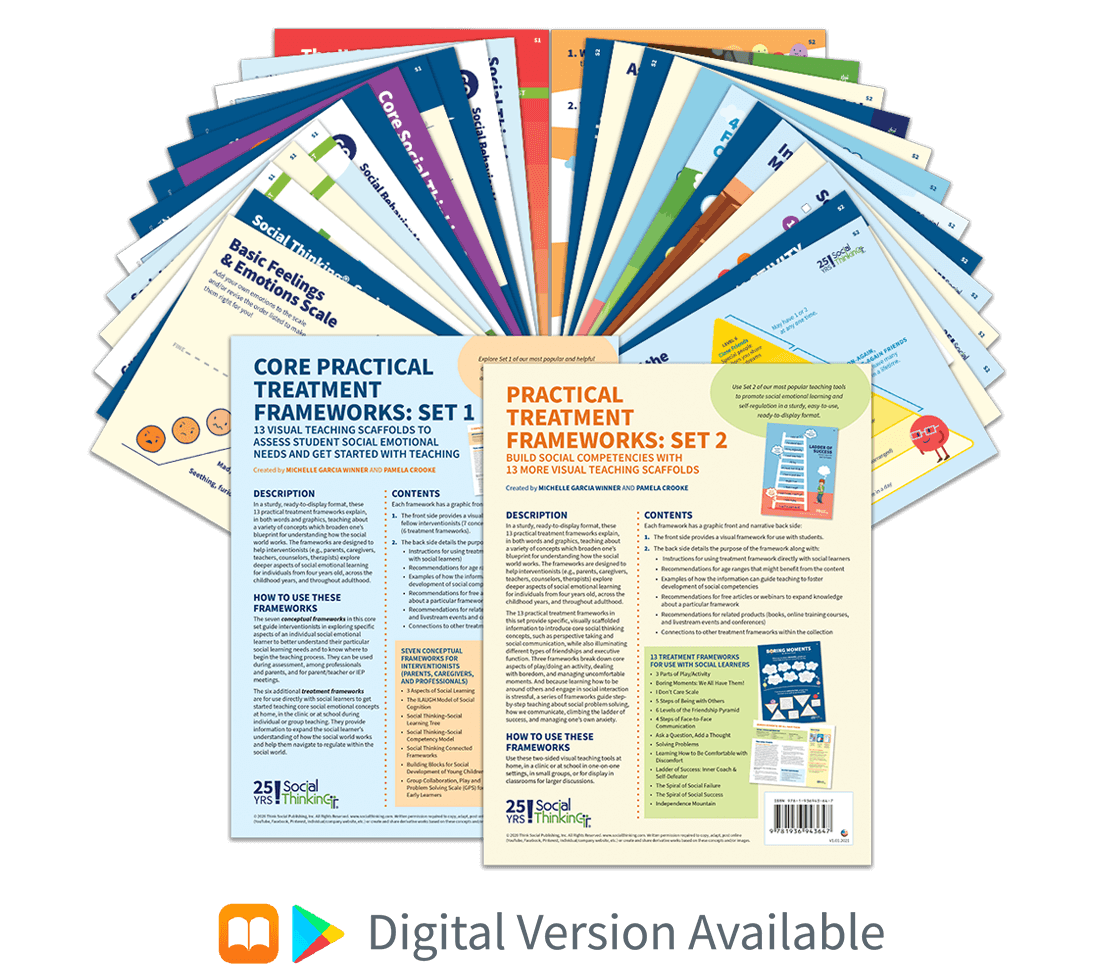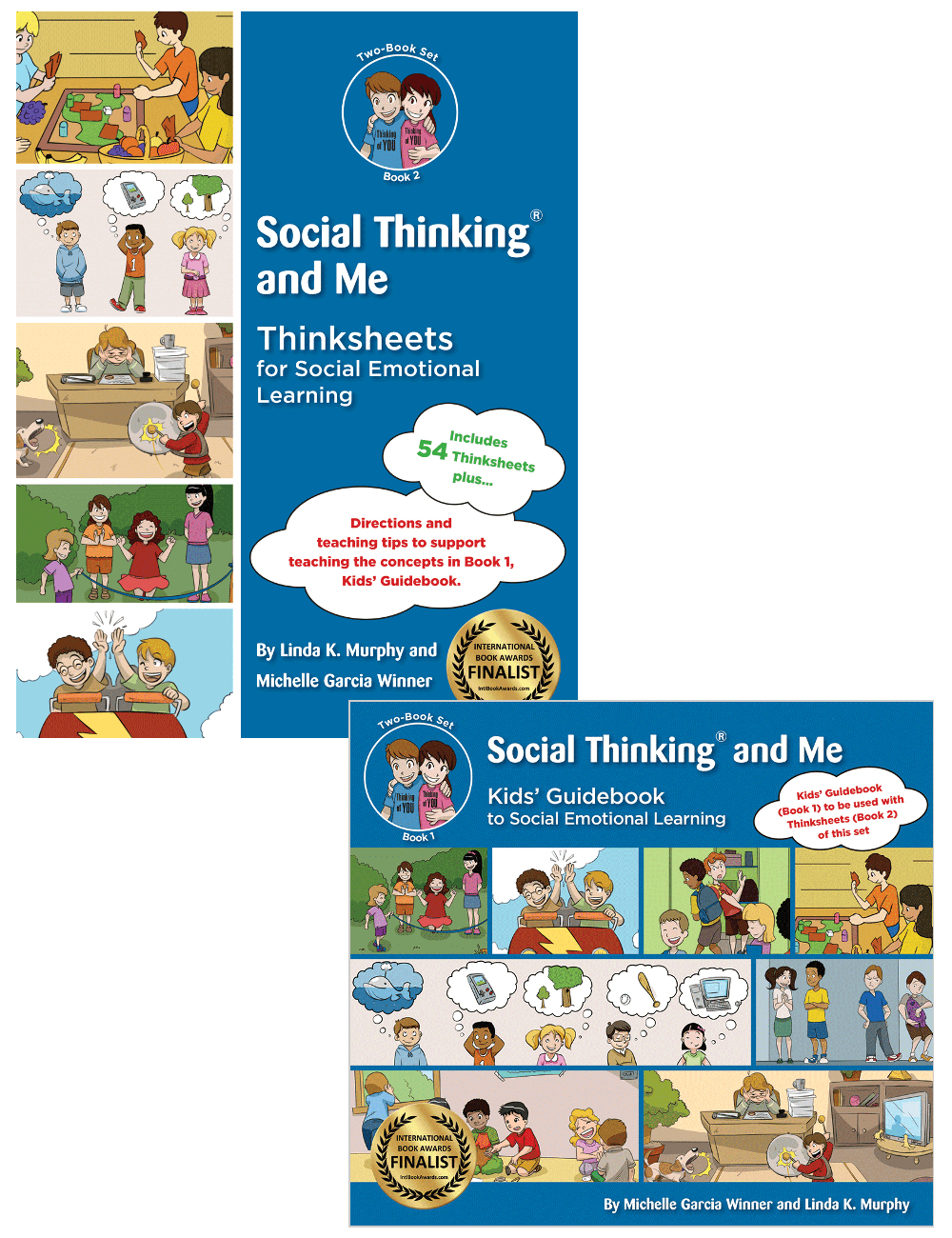Updated: April, 2022
© 2022 Think Social Publishing, Inc.
Several years ago, I was working with a five-year-old boy named Drew. One morning at school, he was hanging up his coat and backpack when another classmate arrived, accompanied by her mom. It was just like the start of any ordinary day, but then I heard Drew’s voice… “You are scary!” I paused, hoping I had heard him incorrectly. Then I heard it again, “Yeah, you look really REALLY scary.” Yes, it was happening. Drew was calling the mom of one his peers scary. Repeatedly, in fact. I wasn’t sure why AND I was the one “in charge.” Taking a deep breath, I considered my options:
1. I could just walk away. The very human part of me considered it. It was a confusing situation! I did not know this other adult and wanted to avoid the situation. But best practices in teaching Social Thinking tell us that teaching “in the moment” is where a lot of deep learning happens. It was important for me to acknowledge this in some way. But how?
2. I could tell Drew that his behavior was inappropriate in an attempt to redirect and move on. But what would that actually teach Drew? Labeling his behavior as inappropriate would most likely communicate a message that I was disappointed and upset with him. It would certainly not tell him what to do next time or explain the impact his words had on others.
3. I could use the Social Thinking Vocabulary in the moment to teach. Something like, “Drew, telling others they look scary is unexpected and might confuse them. The hidden rule is that we usually don’t make comments about how others look, especially when we don’t know them. It is expected to keep those thoughts in our brain.” That language would address the comment in the moment but also open a door for deeper teaching and discussion to follow in our future time together. That approach could set the stage for having Drew think more deeply about this social situation and expectations.
I’ve been working with students with social cognitive challenges for over ten years now. During this time, I’ve collected many stories and experiences like this one. I’d like to say that I’ve successfully used choice three in each and every situation, but that probably isn’t the reality – I’m human too! I will say, however, that choice number three is always the goal. It also exemplifies what makes the Social Thinking Vocabulary such an effective treatment strategy.
The terms “expected” and “unexpected” are concepts that I spend most of my time thinking about and protecting. It takes thought and intention to use them correctly. After I have used the word “unexpected” I try to ask myself, “Did I ask my student to think about the WHY behind it? Why was that behavior unexpected? What hidden rule did we miss? How did it affect someone in the situation?” If I have not provided that reasoning, I am not teaching deeply enough. If I have not provided that reasoning, I’m being focused on behavior and not actually doing Social Thinking. I want my teaching to trigger a thought process, not feelings of shame. I also try to remember that my goal is to first increase awareness. Just because I’ve talked with a student about what behavior is “expected” does NOT mean they will be able to do it, in that moment. Self-regulation and being able to adjust behavior in the moment is a complex ability that only comes after we grow our students’ awareness “muscle” and provide practice opportunities to strength that muscle.
I also reflect on my use of the word “expected.” Have my students been hearing it enough? I strive for a ratio of at least 3:1. For every one time I use the term “unexpected” I try to find three opportunities to highlight what is going well and talk about the “expected” behaviors observed.
The next time you pull out the terms expected and unexpected take some time to reflect. Are my words a catalyst for powerful teaching or just an attempt to redirect behavior? The way in which you answer that question says a lot about the depth of your teaching. As you get the hang of the thought-based teaching that is at the heart of Social Thinking, do keep in mind something we often tell our students: it’s also expected to make mistakes!
Kari Zweber Palmer, Social Thinking Collaborative Member, clinician, and author of this article, explains a fun interactive activity to teach kids the concept of expected and unexpected behavior.
Trouble loading the video? Click here to view.














